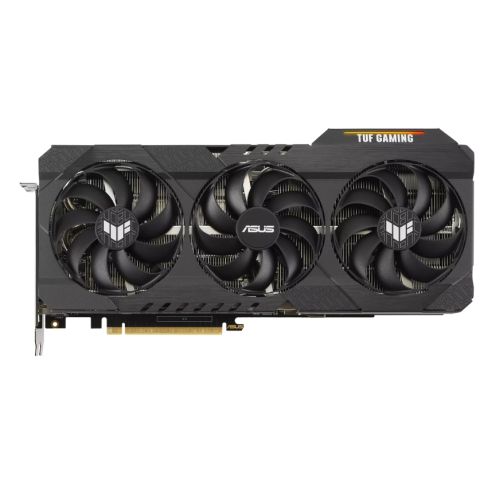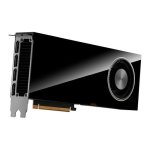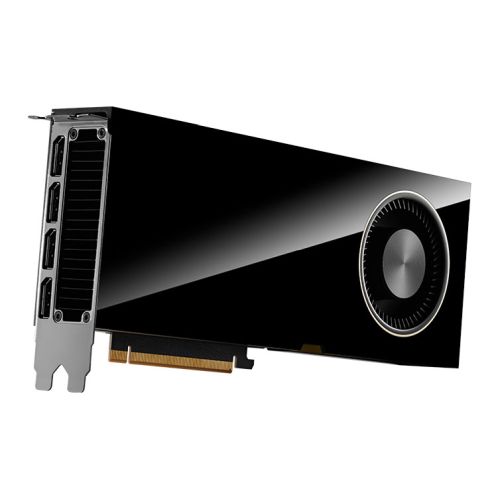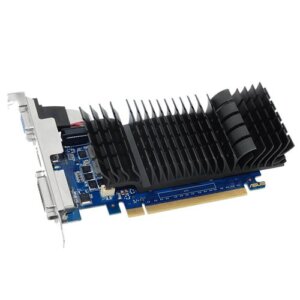Performance For Endless Possibilities
The way people work is undergoing a drastic change with distributed teams and remote workers as the new normal. Artists are facing an ever-increasing demand for differentiated and visually compelling content. Designers and engineers are striving to create more complex and efficient designs in highly supply-constrained environments. Scientists, researchers, and medical professionals are faced with incredible challenges that require the rapid development of solutions on a global scale.
The NVIDIA RTX™ 6000 Ada Generation is designed to meet the challenges of today’s professional workflows. Built on the NVIDIA Ada Lovelace architecture, the RTX 6000 combines 142 third-generation RT Cores, 568 fourth-generation Tensor Cores, and 18176 CUDA® cores with 48GB of graphics memory to deliver the next generation of AI graphics and petaflop inferencing performance for unprecedented speed-up of rendering, AI, graphics, and compute workloads. RTX 6000-powered workstations provide what you need to succeed in today’s ultra-challenging business environment.
NVIDIA RTX 6000 Ada Generation
The NVIDIA RTX 6000 Ada combines the highest levels of rendering, visualisation, AI, and compute performance available in a professional graphics card. It provides the capability for massive graphics and visualisation, real-time photorealistic rendering, immersive AR/MR/VR/XR environments, powerful compute, and the creation and deployment of AI solutions.
If you need the most powerful real-time rendering, graphics, AR/MR/VR/XR, compute, and deep learning solution available from a professional desktop workstation the NVIDIA RTX 6000 Ada is the ideal board for your professional desktop workstation.
NVIDIA Ada Lovelace Architecture
NVIDIA RTX™ 6000 Ada Generation is the most powerful workstation GPU offering high-performance, real-time ray tracing, AI-accelerated compute, and professional graphics rendering. Building upon the major SM enhancements from the Ada Lovelace GPU, the NVIDIA Ada Lovelace architecture provides more cores, higher clocks, and a larger L2 cache for more performance to enhance ray tracing operations, tensor matrix operations, and frame rates with DLSS 3.0.
CUDA Cores
The NVIDIA Ada Lovelace architecture-based CUDA Cores offer more than 2X the single-precision floating point (FP32) throughput compared to the previous generation, providing significant performance improvements for graphics workflows such as 3D model development and compute for workloads such as desktop simulation for computer-aided engineering (CAE). The RTX 6000 Ada enables two FP32 primary data paths, doubling the peak FP32 operations.
3rd Generation RT Cores
Incorporating 3rd generation ray tracing engines, NVIDIA Ada Lovelace architecture-based GPUs provide incredible ray-traced rendering performance. A single RTX 6000 Ada board can render complex professional models with physically accurate shadows, reflections, and refractions to empower users with instant insight. Working in concert with applications leveraging APIs such as NVIDIA OptiX, Microsoft DXR, and Vulkan ray tracing, systems based on the RTX 6000 Ada will power truly interactive design workflows to provide immediate feedback for unprecedented levels of productivity. The RTX 6000 Ada features up to 2X faster ray-triangle intersection throughput compared to the previous generation.
4th Generation Tensor Cores
Specialised for deep learning matrix multiply and accumulate math operations at the heart of neural network training and inferencing functions, the RTX 6000 Ada includes enhanced Tensor Cores that accelerate more data types and still support the Fine-Grained Structured Sparsity feature that delivers more than 2X throughput for tensor matrix operations compared to the previous generation. New Tensor Cores will accelerate new FP8 precision modes. Independent floating-point and integer data paths allow more efficient execution of workloads using a mix of computation and addressing calculations.
PCIe Gen 4
The RTX 6000 Ada supports PCI Express Gen 4, which provides double the bandwidth of PCIe Gen 3, improving data-transfer speeds from CPU memory for data-intensive tasks like AI and data science.
Higher Speed GDDR6 Memory
Built with 48GB GDDR6 memory delivering up to 25% greater throughput for ray tracing, rendering, and AI workloads than the previous generation. The RTX 6000 Ada provides the industry's largest graphics memory footprint to address the largest datasets and models in latency-sensitive professional applications.
5th Generation NVDEC Engine
NVDEC is well suited for transcoding and video playback applications for real-time decoding. The following video codecs are supported for hardware-accelerated decoding: MPEG-2, VC-1, H.264 (AVCHD), H.265 (HEVC), VP8, VP9, and AV1 video formats. Video encoding at 8K/60 will be achievable for professional video editing.
8th Generation NVENC Engine
NVENC can take on the most demanding 4K or 8K video encoding tasks to free up the graphics engine and the CPU for other operations. The RTX 6000 Ada provides better encoding quality than software-based x264 encoders. The RTX 6000 Ada incorporates AV1 video encoding which is 40% more efficient than H.264 encoding for 4K HDR video. AV1 will provide better quality at the same bitrate bandwidth.
Error Correcting Code (ECC) on Graphics Memory
Meet strict data integrity requirements for mission-critical applications with uncompromised computing accuracy and reliability for workstations.
Graphics Pre-emption
Pixel-level pre-emption provides more granular control to better support time-sensitive tasks such as VR motion tracking.
Compute Pre-emption
Pre-emption at the instruction level provides finer-grain control over compute tasks to prevent long-running applications from either monopolising system resources or timing out.
NVIDIA SLI® Technology
Leverage multiple GPUs to dynamically scale graphics performance, enhance image quality, expand display real estate, and assemble a fully virtualised system.
NVIDIA Mosaic Technology
Transparently scale the desktop and applications across up to 4 GPUs and 16 displays from a single workstation while delivering full performance and image quality.
DisplayPort 1.4a
Support up to four 5K monitors @ 60Hz, or dual 8K displays @ 60Hz per card. The RTX 6000 Ada supports HDR colour for 4K @ 60Hz for 10/12b HEVC decode and up to 4K @ 60Hz for 10b HEVC encode. Each DisplayPort connector can drive ultra-high resolutions of 4096×2160 @ 120 Hz with 30-bit colour.
NVIDIA RTX™ Desktop Manager
Gain unprecedented end-user control of the desktop experience for increased productivity in a single large display or multi-display environments, especially in the current age of large, widescreen displays.
NVIDIA Quadro Sync II
Synchronise the display and image output of up to 32 displays3 from 8 GPUs (connected through two Sync II boards) in a single system, reducing the number of machines needed to create an advanced video visualisation environment.
Frame Lock Connector Latch
Each frame lock connector is designed with a self-locking retention mechanism to secure its connection with the frame lock cable to provide robust connectivity and maximum productivity.
OpenGL Quad Buffered Stereo Support
Provide a smooth and immersive 3D Stereo experience for professional applications.
Ultra-High-Resolution Desktop Support
Get more Mosaic topology choices with high-resolution display devices with a 32K Max desktop size.
Professional 3D Stereo Synchronisation
Robust control of stereo effects through a dedicated connection to directly synchronise 3D stereo hardware to an NVIDIA RTX professional graphics card.






Reviews
There are no reviews yet.